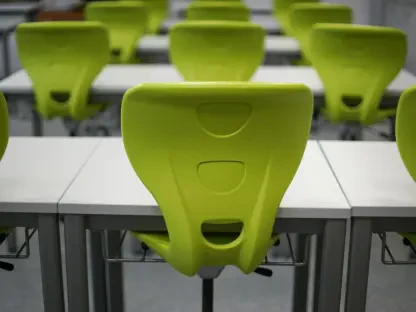The COVID-19 pandemic has left a profound impact on education, altering not just academic routines but also the emotional landscape of students. As schools resume in-person learning, the need to address the heightened social-emotional needs of young learners is more urgent than ever. Educators are now tasked with creating supportive environments where students can thrive emotionally and academically.
The Impact of the Pandemic on Student Mental Health
The psychological impact of COVID-19 on students is substantial. Post-pandemic studies conducted by the American Psychological Association show a marked increase in anxiety, loneliness, and uncertainty among children and adolescents. The Centers for Disease Control and Prevention have also noted a surge in mental health-related emergency visits for children. These statistics underscore an urgent need for effective solutions to support young learners’ emotional well-being.
Addressing these complex emotional needs is not merely about returning to pre-pandemic norms. It involves recognizing that the pandemic has shifted the baseline for what we consider emotional stability in students. They face unique stressors, from disrupted routines to the loss of social interactions, that require tailored approaches to support them. Therefore, implementing effective strategies to manage these unique challenges is crucial for fostering students’ emotional resilience and overall well-being.
The Critical Role of Social-Emotional Learning (SEL)
There has never been a more crucial time for social-emotional learning (SEL) in schools. SEL focuses on helping students manage their emotions, develop healthy relationships, and cope with stress—all essential skills in the current educational landscape. Effective SEL practices create a foundation for positive academic and personal outcomes. Research indicates that well-implemented SEL programs lead to better emotional regulation, improved social skills, and enhanced academic performance.
In the post-COVID era, SEL is not just a supplementary aspect of education but a fundamental component that helps students navigate their complex emotional terrain. Schools must prioritize integrating SEL into the curriculum to help students build resilience and achieve both emotional and academic success. By providing students with the tools they need to manage their emotions and relationships, educators can create a more supportive and effective learning environment.
Implementing Resource-Limited SEL Strategies
Given the limited resources in many schools, innovative and practical SEL strategies are indispensable. Emotional check-in stations, for example, serve as quick yet effective tools for students to express their feelings. Utilizing mood meters, emoji charts, or a “feelings box,” students can better articulate their emotions, giving educators valuable insights into their mental states. These simple yet powerful tools can be easily integrated into daily classroom routines, making SEL accessible even in resource-constrained settings.
Storytelling and role-playing activities offer another accessible SEL strategy. These methods allow students to process their experiences and develop empathy through shared narratives. Incorporating short mindful moments—such as breathing exercises, guided imagery, or simple stretches—can help students destress and regain focus, fitting seamlessly into the daily routine. By embedding these practices into the school day, educators can create a nurturing environment that supports students’ emotional well-being.
Creative Outlets and Peer Connections
Creative expression through activities like drawing, crafting, and playing musical instruments provides students with valuable emotional outlets. These activities enable children to externalize and manage their feelings in a non-verbal, constructive manner. Schools can easily incorporate these practices without requiring extensive resources. Encouraging students to engage in creative activities helps them find joy and relief from emotional stress, fostering a more balanced and healthy school experience.
In addition to creative outlets, fostering peer connections can play a crucial role in emotional well-being. Establishing virtual pen pals and buddy systems provides students with opportunities to build relationships and enhance their communication skills. These measures can help ease feelings of isolation, offering a sense of belonging and connection among students. By creating opportunities for peer interaction, schools can foster a more supportive community wherein students feel seen and understood.
Leveraging Educational Technology (Edtech) for SEL
Education technology (Edtech) presents scalable and personalized solutions for SEL. Platforms like Khan Academy Kids offer extensive SEL resources that are readily accessible to students, educators, and parents. Such platforms ensure that SEL resources are available to a broader audience, regardless of geographic or economic constraints. These digital tools make it easier for schools to implement comprehensive SEL programs even with limited physical resources, enhancing the overall educational experience.
Edtech can tailor SEL content to meet individual students’ needs, providing interactive activities that adapt to each child’s developmental pace. Tools like digital mood meters and emotion charts enable students to engage more deeply with SEL content. These platforms often feature engaging characters and voice recordings, making the exploration of emotions an enjoyable experience. By leveraging Edtech, schools can deliver personalized and engaging SEL experiences that resonate with students.
Supporting Educators and Parents with Edtech
The transition back to in-person learning has underlined the need to address the heightened social-emotional needs of young learners. This period of extended isolation and uncertainty has left many students struggling with issues like anxiety, depression, and a lack of social skills, making it critical for educators to focus on more than just academic recovery. Teachers and school staff are now faced with the challenge of crafting supportive and nurturing environments that foster both emotional and academic growth. Initiatives such as mental health education, counseling services, and safe spaces for students to express their feelings are becoming increasingly essential. It’s imperative for schools to invest in holistic approaches that consider the emotional well-being of each student. By prioritizing emotional health alongside academic achievement, educators can help students build resilience and thrive in a post-pandemic world.









